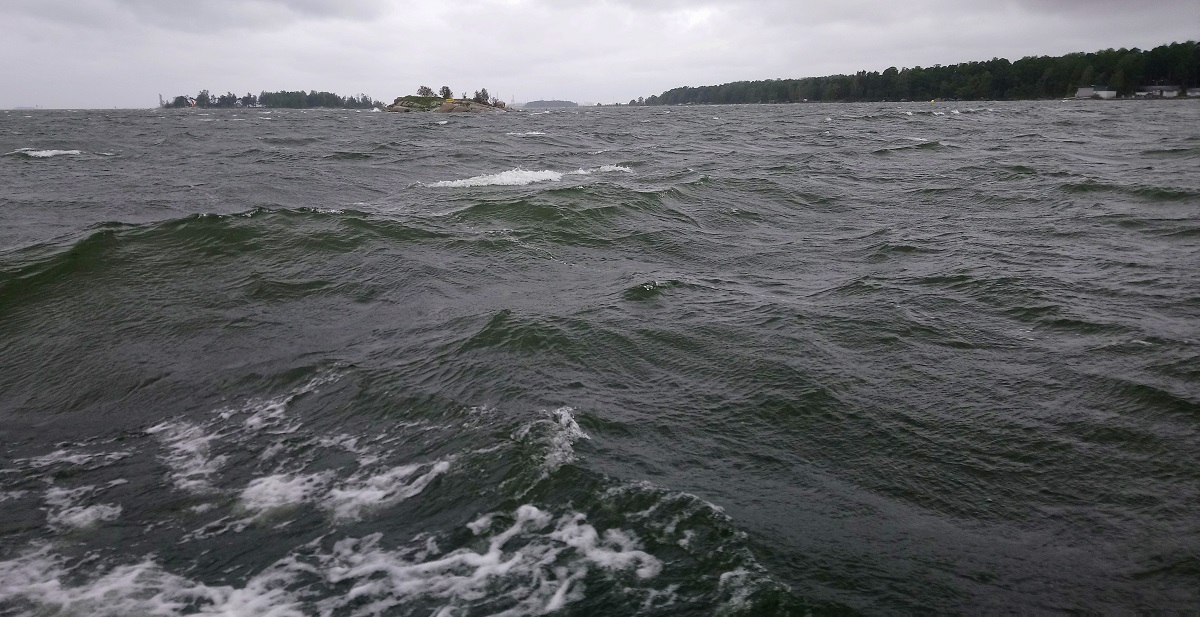The life cycle of wind-induced waves
When the wind begins to blow over a calm water surface, the water is set flowing. The whirls in the flow cause pressure differences that break the flat surface. The wind catches these tiny "wrinkles" and starts growing them up. Small waves are steep in the beginning, but in the course of developing they grow faster in length than in height. The water surface is not just a passive playground of the wind: as a moving surface with waves of different sizes it modifies the wind field that is generating it.
Waves grow according to same physical laws both in seas and in lakes, the circumstances just differ. The most important factors that control the growth of the waves are the wind speed, the wind duration (how long the wind blows) and the fetch. The fetch is the distance from the upwind shore, or more generally, the distance over which the wind blows. When the wind duration is not limiting the growth, the fetch determines the wave height. The geometry and the depth of the water basin have also their effects on the evolution of waves. When the depth is less than a half of the wavelength, the waves begin to feel the bottom (wavelength is the distance between two successive wave crests).

Water salinity or temperature have hardly any significance, only the temperature difference between air and water has been found to affect the growth. When the water is warmer than air, waves grow a bit faster than in an opposite situation. This is often the case in autumn and in winter, but the more severe wave climate of the season is mainly caused by the more frequent high winds, compared to the spring and summer.
When the wind calms down, the propagation speed of the waves is faster than the wind speed, and the wind can no longer feed energy to the waves. Smaller waves dissipate and the waves turn into swell. Waves that have propagated from a distant storm are also called swell. In the oceans swell can propagate thousands of kilometres without dissipating before entering shallow water near the coast where they break causing sometimes impressive breakers.
28.10.2021
